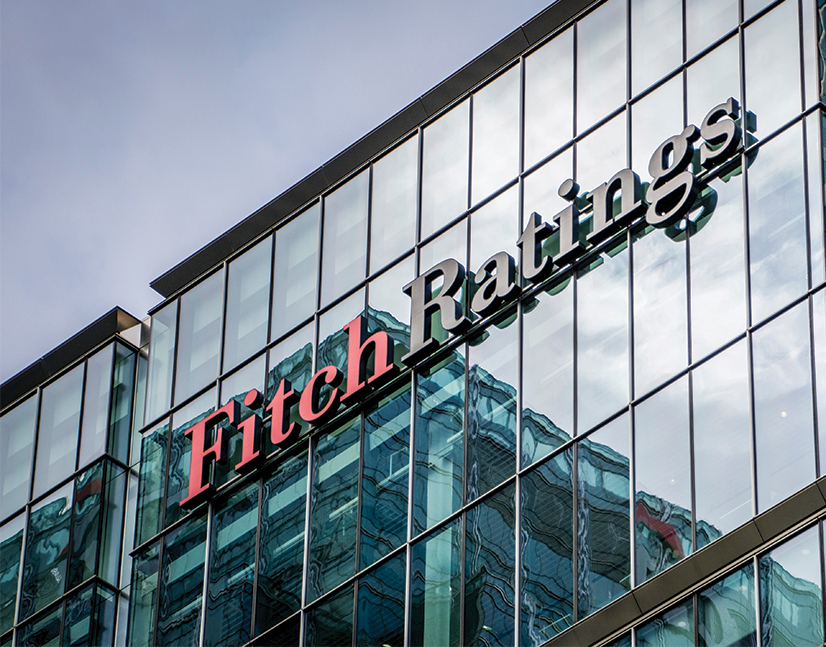
Credit investors look beyond the horizon
Fixed-income investors expect to be tested further in 2022 as the beginning of a rising rate cycle looms. However, credit fund managers say solid corporate earnings from the last financial year and a robust forecast economic rebound should ensure an ongoing pipeline of opportunities.
Chris Rich Staff Writer KANGANEWS
While macro and monetary factors do not all have a direct impact on the credit sector, it is increasingly clear that the end of 2021 marks a turning point in global markets that will affect investors of all types. The spectre of inflation dominated discussion in 2021 and as the year went on key indicators increasingly tested the school of thought that inflation is transitory.
While most cash rates remain anchored the pressure is all on the up side. The Reserve Bank of New Zealand has already commenced hiking rates while the Reserve Bank of Australia (RBA) has effectively been compelled by market pressure to drop its emergency rate suppression policy.
The RBA officially abandoned its policy of yield-curve control (YCC) on 2 November, following the April 2024 Australian Commonwealth government bond (ACGB) trading significantly higher than the 0.1 per cent target over prior weeks. Three-year yield was higher than 0.7 per cent from mid-October and approached 1.2 per cent at the end of the month. Widening occurred across the curve, including a further 70-basis point sell off at 10-year tenor.
By the time the RBA officially abandoned YCC its demise came as no surprise. Following the reserve bank’s November board meeting, governor Philip Lowe said the effectiveness of the yield target in holding down the general structure of interest rates in Australia had diminished as a result of market movements globally.
The big question for the bond market is how far the reversal will go. The vast quantity of QE funds still circulating in the Australian and global markets represents an ongoing stimulus. Many now expect the RBA to scale back its bond-purchasing programme early in the new year and wrap it up later in 2022. But unless the reserve bank can succeed not just in turning the tap off but also starting to drain the liquidity that has poured from it – a task few of its peers have succeeded at since the financial crisis – the upward pressure on rates will be greater.
On the other hand, switching directly from emergency stimulus to an aggressive tightening cycle is likely a step too far, according to Darren Langer, co-head of Australia fixed income at Yarra Capital Management in Sydney. In other words, rate hikes are likely to be limited.
Chris Rands, Sydney-based senior portfolio manager at Yarra, does not expect the cash rate to rise above 1.5 per cent over the medium term. The destination of a higher interest rate, if not the direction of travel, could be a net positive for the fixed-income asset class and for credit inflows. Even in a relatively gentle rate- hiking cycle, 10-year ACGB yield could approach 2.5 per cent – which Rands says would likely be a trigger point for funds flowing into bonds.
Rising rates should also have some positive consequences for credit investors. For instance, Craig Morabito, Sydney-based senior portfolio manager, global credit at First Sentier Investors, says relatively orderly interest-rate rises should support spreads in the global credit fund’s areas of interest, including US high-yield and Europe – with fewer negative-yielding securities potentially boosting the latter. The fund has reduced its exposure to Asia due to the slowdown in China and lingering volatility risk following Evergrande’s debt woes.
A rising rates cycle, however, also brings with it a more challenging phenomenon fixed-income investors have not encountered for more than a decade. Higher rates are ultimately positive for fixed income and credit, all else being equal – but each incremental movement hurts the mark-to-market value of existing holdings.
AMP Capital’s Sydney-based head of credit, Sonia Baillie, says the role of active fund management in fixed income has never been more important than it is in the new environment. “Being able to position and take advantage of rate increases still creates opportunities to generate alpha, even if overall credit returns are challenged,” she explains.
CREDIT FUNDAMENTALS
The spectre of inflation does not directly affect credit investment but investors are keeping an eye on the potential impact on individual companies – specifically through rising supply-chain costs and, potentially, higher wages. At the same time, rising rates and stimulus withdrawal ultimately would not be possible without a relatively robust economy.
Investors say this backdrop is a clear credit positive. As the Australian economy opens after several nationwide lockdowns and begins living with COVID-19, the outlook for corporate issuers appears positive – notwithstanding the threat the omicron variant may present. This is reflected in strong earnings for the 2021 financial year.
Though the credit outlook is positive, Morabito says how companies deal with inflation over the next few quarters will be telling. Like other fund managers, he is paying close attention to businesses’ pricing power. For the time being, demand has remained robust even as supply-chain price increases are passed on. Whether this remains the case is a key question. There are challenges either way: a business sector with pricing power risks embedding inflation in the system, while one without could see profits put under pressure.
“If demand slows and cost pressure continues, certain companies will be able to pass on the cost and others will not,” Morabito suggests. “We are doing a lot of work repositioning into companies we think are suited to an environment of further price rises.”
Rising interest rates and thus cost of debt should not challenge the credit quality of well-managed companies – at least in the early period of the cycle, Morabito explains. “Most companies have fixed-rate debt in place and have used this period of low all-in yield to term out their debt. The actual increase in cost does not come until they need to refinance.”
CREDIT VOLATILITY
Sound fundamentals are one thing, but credit investors also have to cope with the volatility they expect to accompany the next phase of the economic cycle. Rates volatility caused credit investors some consternation throughout 2021, particularly given the high volume of primary deals coming to market in the long end of the curve.
This gave some buyers sufficient reason for caution in new allocations, even as the primary market continued to be positive overall. “With volatility whipping around and spreads widening in the long end, investors have increasingly chosen to bid in smaller sizes or sit on the sideline and wait for the market to calm down,” says Pauline Chrystal, Sydney-based portfolio manager at Kapstream Capital.
Kapstream’s focus has been on shorter tenor in primary deals, but Chrystal says it is willing to extend duration for the right name if it thinks there is an attractive concession and potential for tightening after pricing. She names Woolworth’s 10-year sustainability-linked bond, priced in October 2021, as an example.
Rates volatility has not been enough to stop the ongoing process of spread contraction, to the extent that Chrystal now sees valuation as a problem. “Five- and 10-year corporate paper is trading 20-30 basis points tighter than the historical average. We are cautious about valuation and this will translate into how we position the portfolio,” she tells KangaNews.
AMP Capital actually reduced credit allocation in its funds over the course of 2021, according to Baillie. AMP Capital had been overweight in credit in 2020 after taking advantage of market dislocation in mid-year – driven largely by liquidity dynamics rather than deterioration in credit fundamentals given policy support.
Baillie reveals: “Given how far spreads rallied in 2021, valuations look stretched – particularly in the longer end of the curve – even though technicals remain supportive. We therefore looked to take profit on the higher credit allocation we made through 2020.”
AMP Capital is selling out of the industrial and transport sectors – particularly airports and airlines – and reducing its subordinated corporate debt exposure. Baillie continues: “But we are not selling because we are concerned about the credit outlook. We are being disciplined about the valuation signal.”
Securitisation market outlook
A dearth of senior-unsecured bank issuance from March 2020 until mid-2021 compelled yield-starved credit investors to explore other asset classes. Securitisation was arguably the biggest winner, with record volume and tight spreads characterising new issuance all year.
Australia’s nonbank financial institutions took particular advantage of increased demand, coinciding with a surge in loan origination from a hot property market. But with the end of the Reserve Bank of Australia’s term-funding facility in June 2021, credit investors expect bank issuance to return to its normal, pre-COVID-19 level with a consequent impact on price and liquidity in other asset classes.
After tightening in H1, triple-A securitisation spreads drifted wider late in 2021. Victoria Gao, Sydney-based portfolio manager, fixed income at CIP Asset Management (CIPAM), says investor demand for senior tranches has also eased. “Coverage ratios in senior tranches have been low and this has affected some issuers’ ability to upsize. To achieve a larger deal size, we have seen issuers include foreign- currency triple-A tranches or guarantee a larger proportion of mezzanine notes for a triple-A supporting bid.”
The spread widening on senior tranches has not yet flowed into the mezzanine sector, where CIPAM also invests and which Gao says remains oversubscribed. Gao adds there is softness in single-B-rated notes and that it “will be interesting to see how the market develops into the new year”.
She adds a flatter credit curve caused by widening spreads means triple-A tranches are relatively more attractive than they were a few months ago. But it also raises the spectre of call risk in new transactions.
“The spread widening in triple-A tranches is already pretty close to the step-up in that tranche if the deal is not called. If spreads widen further from here, we expect investors increasingly to price in call risk especially in RMBS [residential mortgage-backed securities] transactions.”
Credit risk is also on the cards. For the first time in more than a decade, mortgage borrowers face the prospect of a rising rate cycle. There is some concern that a quick succession of rate hikes might challenge borrowers’ ability to make mortgage repayments.
The Australian Prudential Regulation Authority increased banks’ loan serviceability buffer in October to counter what it perceives to be rising risks in home lending. Further macroprudential intervention is expected in the new year.
Gao says many borrowers have fixed their mortgage rates at less than 2 per cent while market rates could double over the next 2-3 years. “While we do not think payment stress alone will affect credit quality, it will lead to a tightening in financial conditions. Our concern is how this flows through into the wider economy.”
BANK ISSUANCE
Arguably the biggest supply dynamic in Australian credit in the second half of 2021 was the return of the Australian major banks to wholesale term issuance following the end of the term-funding facility (TFF) on 30 June. Thanks also to huge deposit inflows, Australian banks had been less reliant on senior-unsecured funding from early 2020 until H2 2021.
The Australian Prudential Regulation Authority (APRA)’s September decision to wind down its committed-liquidity facility (CLF) by the end of 2022 is also widely expected to add to the banks’ funding needs, though the big four say their outlook is still a return to pre-pandemic needs rather than a significant uplift. Even so, bank spreads in the secondary market drifted wider after APRA’s announcement.
By the end of 2021, major-bank issuance in the domestic market had picked up. However, supply of new transactions had not been overwhelming as the banks focused on offshore bank bonds at spreads that have widened but not fundamentally corrected and, as a second-order effect, what the expected 2022 influx of bank supply will mean for asset classes that attracted demand in its absence (see box).
After selling off its major-bank holdings in mid-2020 and recycling the proceeds into nonfinancial companies with pandemic-challenged businesses but strong credit fundamentals, Chrystal says Kapstream is not anticipating purchasing major- bank paper in the near future.
Baillie says AMP Capital is also underweight in senior bank paper and is likely to remain so for a while, though tier-two debt is still priced relatively attractively relative to senior debt. “We do not anticipate [bank senior] spreads widening materially from here,” she tells KangaNews. “Our expectation is that they will track sideways in a narrow – about 10 basis point – range for the next
3-6 months.”

nonbank Yearbook 2023
KangaNews's eighth annual guide to the business and funding trends in Australia's nonbank financial-institution sector.

WOMEN IN CAPITAL MARKETS Yearbook 2023
KangaNews's annual yearbook amplifying female voices in the Australian capital market.

















